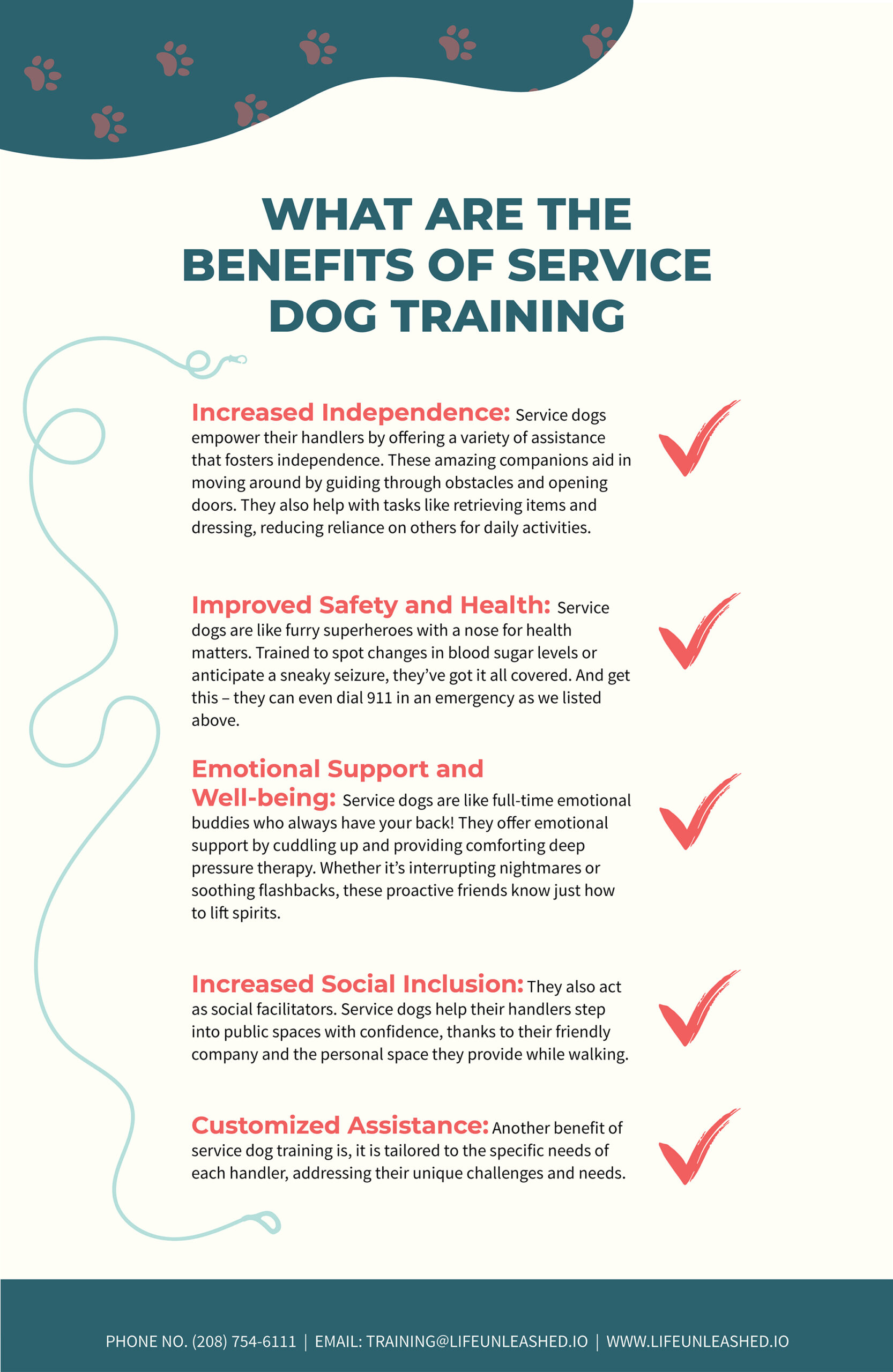Did you know that not every working dog is a Service Dog? It’s true! Emotional Support Animals, Therapy Dogs, and even heroic Police K9s play important roles, but they are not considered Service Dogs under the law.
So, what makes a Service Dog so special? According to the ADA, a Service Dog is a canine that is individually trained to perform specific tasks for a person with a disability. These dogs are the real MVPs, undergoing months—sometimes years—of rigorous training to master their life-changing skills.
Not every dog has what it takes, but those who make the cut earn a unique right: the VIP pass to accompany their handlers everywhere, even in places where pets are typically not allowed.
But what tasks can these incredible dogs actually do? What are the real benefits of their intense training? And can you train our dog to become a service dog? We’re answering all your burning questions about these unique and amazing animals.
Let’s dive in and uncover what makes a Service Dog a true lifesaver. 🐾
What Exactly Can Service Dogs Do?
Service dogs are amazing helpers! Just like your typical trained dogs, they’ve mastered the basics —sit, stay, and lie down. But these dogs belong to a special group of working-class dogs. They go through special training to be real pros at assisting their owners with specific disabilities.
They pick up all sorts of skills to make life smoother for their owners, helping them navigate daily tasks just like everyone else. Here are some examples of the unique tasks these service animals can be trained to do:
- Guiding individuals who are blind or visually impaired.
- Retrieving items such as keys or dropped items for their handlers who may have difficulty bending down or reaching them.
- Detecting and alerting to changes in blood sugar levels for individuals with diabetes before they become critical.
- Anticipating and responding to seizure episodes by providing support during and after the episode, such as fetching medication or alerting others for assistance.
- Assisting with dressing or undressing to individuals with mobility or dexterity issues.
- Offering deep pressure therapy to provide comfort. They apply gentle, firm pressure to specific parts of the person’s body, typically through leaning, sitting or lying down.
- Alerting to specific sights, sounds, people or other relevant environmental cues.
- Dialing 911 on specialized devices or activating an emergency alert system critical situations.
- Intervening during nightmares and flashbacks for individuals with PTSD.
- Signaling the presence of allergens to prevent allergic reactions.
- Creating a physical or spatial buffer between the handler and the surrounding environment.
- Performing various household tasks, such as turning on lights, retrieving items, or even assisting with chores.
What Are The Benefits of Service Dog Training?
From the list above, it is clear that service dogs offer quite a wide range of practical assistance to their handlers. This is why we referred to them as the real MVPs. What’s more, a study from Purdue University’s College of Veterinary Medicine found that training service dogs doesn’t just bring practical help – there are extra awesome benefits too! Check these out:

Conclusion
In a nutshell, service dogs are more than just helpers; they’re true companions that make a world of difference. From lending a helping paw with daily tasks to providing unwavering emotional support and boosting independence, these amazing dogs create a bond that goes beyond words.
Their presence doesn’t just open doors; it opens hearts, fostering a sense of confidence, belonging, and joy. In celebrating the incredible journey of service dogs and their handlers, we’re not just acknowledging their skills—we’re recognizing the transformative power of friendship, loyalty, and a wagging tail.
Inspired by these incredible animals? If you’re wondering how your own dog could train to become a service dog, our detailed guide walks you through the entire process, from assessing suitability to the final steps of certification.
And if you’re curious about the investment behind such specialized training, you can get a personalized estimate using our Dog Training Cost Calculator.
FAQs About Service Dog Training
What is a service dog?
A service dog is a specially trained canine that performs tasks to assist individuals with disabilities, helping them lead more independent lives.
What types of disabilities can a service dog assist with?
Service dogs can assist individuals with a variety of disabilities, including but not limited to mobility impairments, visual or hearing impairments, psychiatric conditions, and medical conditions such as diabetes or epilepsy.
How is a service dog different from a therapy dog or emotional support animal?
Service dogs are trained to perform specific tasks for individuals with disabilities, whereas therapy dogs provide comfort and companionship to people in various settings. Emotional support animals offer emotional support and comfort but do not undergo the same extensive training as service dogs.
What tasks can a service dog be trained to perform?
Service dogs can be trained to perform tasks such as retrieving items, opening doors, providing balance support, alerting to medical conditions, and more, depending on the individual’s specific needs.
How do I qualify for a service dog?
Qualification for a service dog is typically determined by the presence of a disability and the individual’s ability to benefit from the assistance of a trained service dog. The process may involve consultation with a healthcare professional and a qualified service dog trainer.
Can I train my own service dog?
In some cases, individuals may train their own service dogs, but it requires a significant commitment of time, resources, and expertise. It’s recommended to work with a professional service dog trainer or organization for the best results.
How long does service dog training take?
The duration of training can vary based on factors such as the dog’s breed, the complexity of tasks, and the handler’s ability to reinforce training consistently. On average, it may take 6 months to 2 years for a service dog to complete its training.
Can any dog become a service dog?
While many breeds and mixed breeds can become service dogs, certain traits such as intelligence, temperament, and trainability are crucial. Working with a reputable trainer or organization can help assess a dog’s suitability for service work.
Are service dogs allowed in all public places?
In many countries, service dogs are legally permitted to accompany their handlers in public places, including restaurants, stores, and public transportation. It’s important to be aware of local laws and regulations regarding service dog access.
Do service dogs need certification or identification?
In some places, there is no official certification or identification required for service dogs. However, having appropriate documentation from a reputable trainer or organization can be helpful in confirming the dog’s status as a trained service animal.




